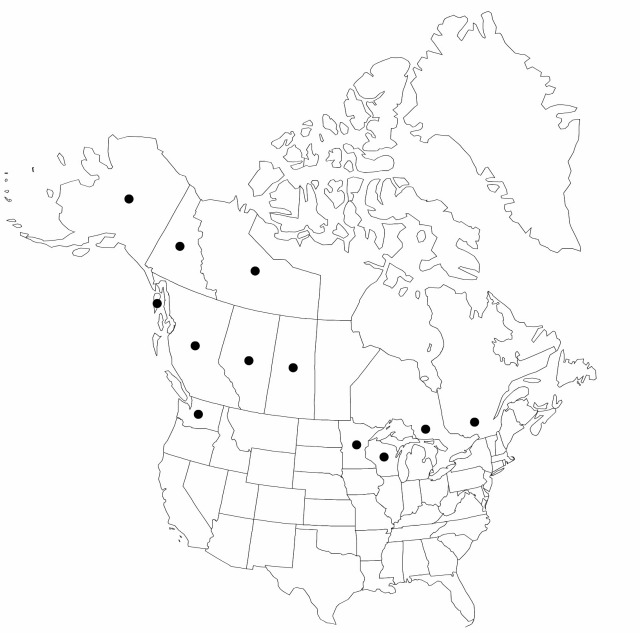Eleocharis mamillata subsp. mamillata
Plants perennial, mat-forming; rhizomes evident, long, 0.7–1 mm thick, soft, cortex persistent, longer internodes 2–6 cm, scales often fugaceous, 5–9 mm, membranous, not fibrous. Culms terete, often with 8–14 blunt ridges when dry, 10–50 cm × 0.5–3 mm, very soft, internally spongy. Leaves: distal leaf-sheaths persistent, often splitting abaxially, mostly reddish proximally, green to stramineous distally, not inflated, not callose, membranous, apex obtuse, tooth absent. Spikelets ovoid, 5–20 × 3–5 mm, acute; proximal scale clasping 2/3 of culm, entire; subproximal scale empty; floral scales often spreading in fruit, 15–80, 5 per mm of rachilla, medium brown, midrib regions stramineous or greenish, ovate, 2.5–4 × 1.5–2 mm, entire, apex acute to obtuse, sometimes carinate in distal part of spikelet. Flowers: perianth bristles (4–) 5–6 (–8), brown, slender to stout, mostly exceeding tubercle, to 2 times longer than achene; stamens 3; anthers stramineous, 0.9–1.5 mm; styles 2-fid. Achenes not persistent, yellow maturing to stramineous, biconvex, angles obscure, obovoid (to obpyriform), 1–1.4 × 0.9–1.3 mm, apex rounded, neck absent, smooth at 30X. Tubercles brown to partly whitish, pyramidal to mamillate, lower than to as high as wide, 0.2–0.6 × 0.4–0.6 mm. 2n = 16.
Phenology: Fruiting summer.
Habitat: Fresh lakeshores, shallow ponds, streams, floating mats, bogs, fens, ditches
Elevation: 20–800 m
Distribution

Alta., B.C., N.W.T., Ont., Que., Sask., Yukon, Alaska, Minn., Wash., Wis., Eurasia
Discussion
Eleocharis mamillata has been confused in North America with E. macrostachya and E. palustris. In addition to the perianth bristle and achene differences as given in the key, E. mamillata differs from E. palustris in culm stomate shape and distance between epidermal collenchyma strands (S. M. Walters 1953b; S.-O. Strandhede and R. Dahlgren 1968). Eleocharis mamillata subsp. mamillata, with the tubercle mamillate, usually shorter than wide, and subsp. austriaca (Hayek) Strandhede, with the tubercle conic, longer than wide, are recognized in Europe; in North America only E. mamillata subsp. mamillata is thus far known. The stamen filaments usually remain attached to the shed achenes, and together with the bristles they keep the achenes in ball-like aggregates that drift with winds and water currents (S.-O. Strandhede 1966).
Selected References
None.
Lower Taxa
"shortened" is not a number.